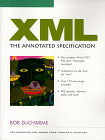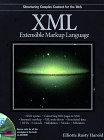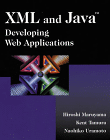. C++
. Java
. Design Patterns
. HTML
. XML
. CGI
. Perl
. Linux

|
|
| XML In Brief | Web Resources |
|
You may have heard that XML, the relatively new Markup Language, will revolutionize the Web,
and that XML has the potential to reshape the way data is exchanged over the Internet. Extensible Markup
Language (XML for short) is a new language designed to make the information self-describing.
The central point about XML is it's "extensibility" -the ability to create whatever tags you like/need in a document.
Most of today's web sites function is more than just a fancy fax machine that sends documents to anyone who asks.
HTML is the dominator of today's Internet Languages. Although HTML is the most successful electronic-publishing language ever
invented, it only describes how a Web Browser should arrange text, images and other graphic constructs on a
page. HTML tags only say how the information is to be displayed. The tags do not convey anything about the
information being displayed.
The simple solution, in theory for this problem could be to use tags that say what the
information is, not what it looks like. XML makes it possible by allowing anyone to design a new, custom-built
language. It allows you to give meaningful tags to the information. Ofcourse, the meanings of your tags make sense to other
people when you write some prose to explain them and makes sense to computers when you write some software to process them.
To understand, imagine a situation wherein you have got the information you wanted from the other site and want to get the fine-tuning of the
same information. In today's situation, this is only possible by requesting the server again by narrowing your search criteria.
When your computer has all the power to process the information it has got, why can't it fine-tune it insted of requestibg the
server again. Imagine how much internet traffic every such request takes and multiply it by few million Web users. So XML in
combination with Java not only makes this this information exchange a meaningful but also reduces the traffic by making use of
the power of your Computer.
Before you abandon HTML, find out what XML really means for the future of Web building.
Get started right away.
|
Book Picks




|
|
| XML In Brief | Web Resources |
|
|



